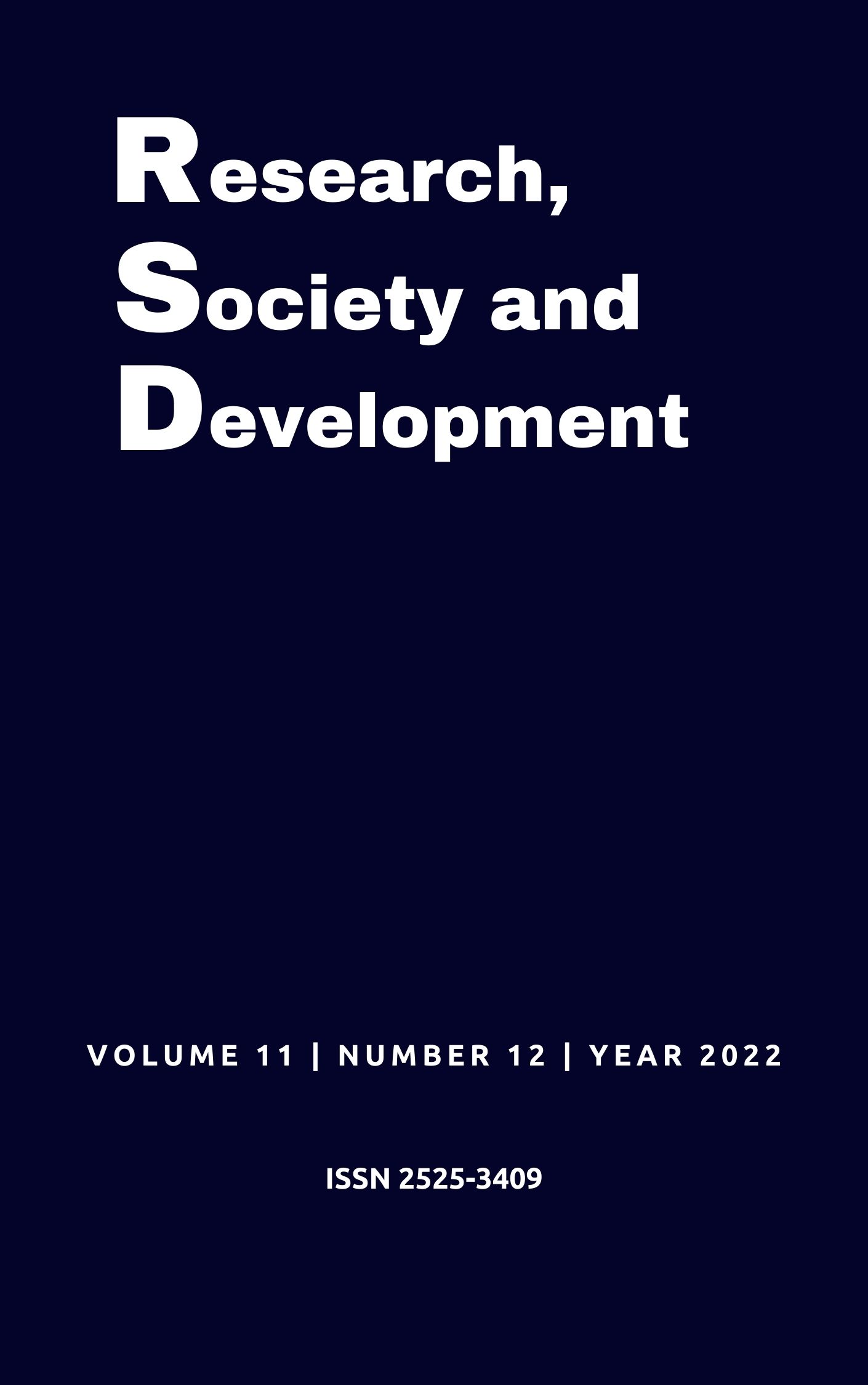Playful text as a didactic resource in the teaching of ecology, behavior and animal domestication
DOI:
https://doi.org/10.33448/rsd-v11i12.34487Keywords:
Ecological relations; Evolution; Animals; Chronicle.Abstract
The teaching of ecology, behavior and animal domestication is still a challenge for education professionals, especially in relation to interspecific interactions between humans and animals. Because it is a very theoretical content and students end up viewing it as boring and dull. One way to solve this problem is through the use of playful teaching materials that facilitate students' understanding and interaction with the content. However, teaching resources on the subject are still scarce or expensive. With this, this work aims to develop a playful multidisciplinary discursive text as a low-cost didactic resource in the teaching of ecology and animal behavior. For this, a playful text was created in the form of a chronicle that can be used in elementary, secondary and higher education, based on books on animal behavior, general biology, ecology and anthropology, which entertains the reader with a comic and interactive narrative. The text tells the story of a mouse and the frustrated attempts of one of the characters to eliminate it from his house, secretly describing an anthropized food web and the harmonic and disharmonious interspecific relationships of commensalism, predation, cooperation, mutualism and competition of the animals. Characters, in addition to their variations according to their behavior. The didactic resource produced proves to be a good teaching tool, as it provides an interactive and fun way to learn the content, in addition to acting as a facilitator of dialogue between the teacher and the student.
References
Alcock, J. (2010). Comportamento Animal: uma abordagem evolutiva. 9. ed. Artimed.
Andrade, A. et al. (2002) Animais de laboratório. 1ed. Ed. Fiocruz.
Brait, L. F. R. et al. (2010). A relação professor/aluno no processo de ensino e aprendizagem. Itinerarius Reflectionis. 6 (1), p.1-15.
Bessa, E. & ARNT, A. (2011). Comportamento animal: teoria e prática pedagógica. 1ed. Ed. Mediação.
Booth, P. R. & Sinker, C. A. (1979). The teaching of ecology in schools. Journal Of Biological Education. 13 (4), p. 261-266.
Bulgraen, V. C. (2010). O papel do professor e sua mediação nos processos de elaboração do conhecimento. Revista Conteúdo. 1 (4), p.30-39.
Esperidião-antonio, V. et al. (2008). Neurobiologia das emoções. Revista de Psiquiatria Clínica. 35 (2), p. 55-65.
Gaedtke, K. M. (2017). Cães, gatos, mamães e pet sitters: a relação entre humanos e animais de estimação e seus contrapontos. VI React. 3 (3), p. 53-70.
Grings, V. H. (2006) Controle integrado de ratos. 1ed. Ed. Embrapa Suínos e Aves.
Harari, Y. N. (2018). Sapiens: uma breve história da humanidade. 1ed. Ed. L&Pm Pocket.
Krasilchik, M. (2008). Prática no ensino de biologia, São Paulo, 2. ed., editora da Universidade de São Paulo.
Laurence, J. (2005). Biologia: ensino médio. 1ed. Ed. Nova Geração.
Losey, R. J. (2021) Domestication is not an ancient moment of selection for prosociality: insights from dogs and modern humans. Journal Of Social Archaeology. 22 (2), p. 131-148.
Lopes, S. & Rosso, S. (2005). Biologia. 1ed. Ed. Saraiva.
Mazon, M. S. (2020). O melhor amigo do homem: Afetos e cachorros no Brasil em perspectiva sociológica. Estudos de Sociologia. 25 (49), p. 57-77.
Nicola, J. A. & Paniz, C. M. (2017). A importância da utilização de diferentes recursos didáticos no ensino de biologia. Infor Unesp. 2 (1), p. 355-381.
Oliveira, S. R. L. (2022). Aspectos do lúdico no processo de ensino-aprendizagem no ensino fundamental: uma revisão de literatura. Brazilian Journal Of Development. 8 (5), p. 38933-38953.
Ostos, N. S. C. (2017). A luta em defesa dos animais no Brasil: uma perspectiva histórica. Ciência e Cultura. 69 (2), p. 54-57.
Purugganan, M. D. (2022) What is domestication? Trends In Ecology & Evolution. 37 (80), p. 663-671.
Soares, A. G., & Coutinho, F. Â. (2011). Leitura, discussão e produção de textos como recurso didático para o ensino de biologia. Revista Brasileira de Pesquisa em Educação em Ciências. 9 (2), p. 01-22.
Downloads
Published
How to Cite
Issue
Section
License
Copyright (c) 2022 Wuglenya Daislla Martins da Silva; Beatriz Aparecida Blanco Gonsales; Pedro Felipe Fróio Torres

This work is licensed under a Creative Commons Attribution 4.0 International License.
Authors who publish with this journal agree to the following terms:
1) Authors retain copyright and grant the journal right of first publication with the work simultaneously licensed under a Creative Commons Attribution License that allows others to share the work with an acknowledgement of the work's authorship and initial publication in this journal.
2) Authors are able to enter into separate, additional contractual arrangements for the non-exclusive distribution of the journal's published version of the work (e.g., post it to an institutional repository or publish it in a book), with an acknowledgement of its initial publication in this journal.
3) Authors are permitted and encouraged to post their work online (e.g., in institutional repositories or on their website) prior to and during the submission process, as it can lead to productive exchanges, as well as earlier and greater citation of published work.

